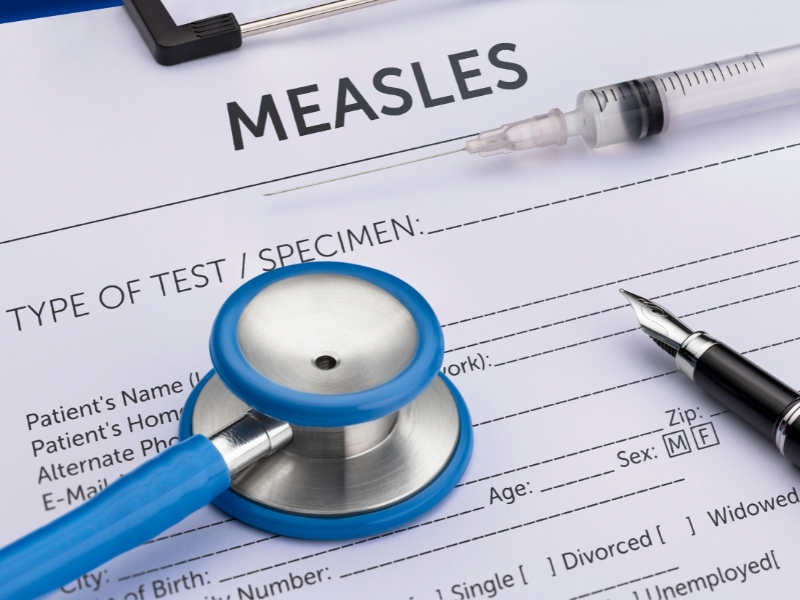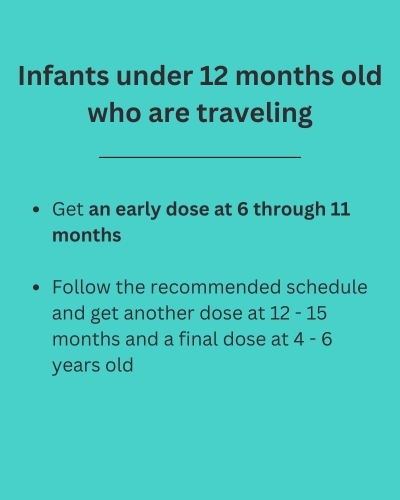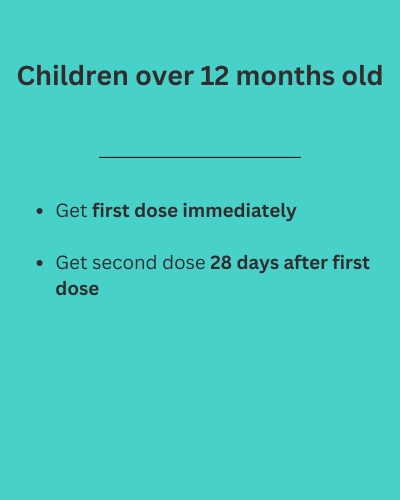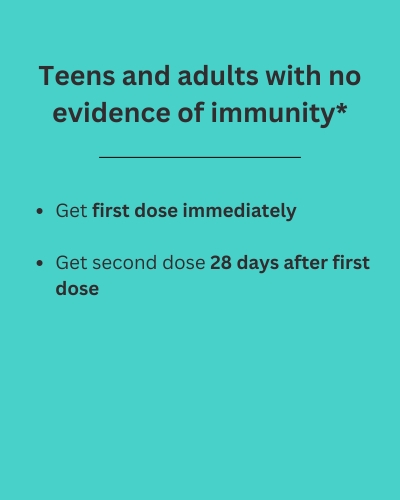Measles
Measles cases in the United States originate from unvaccinated international travelers.
If you plan to travel internationally, make sure you are protected against measles before departure, no matter where you are traveling.

What are Measles?
It is spread through coughing and sneezing. If other people breathe the contaminated air or touch the infected surface, then touch their eyes, noses, or mouths, they can become infected. Measles symptoms appear 7 to 14 days after contact with the virus and typically include high fever, cough, runny nose, and watery eyes. Koplik spots( tiny white spots inside the mouth) appears 2-3 days after symptoms begin. Measles rash appears 3 to 5 days after the first symptoms.
Which Travelers are at Risk?
You are at risk of measles infection if you have not been fully vaccinated or have not had measles in the past and you travel internationally to areas where measles is spreading.
Before International Travel: Make Sure You’re Protected Against Measles
The best way to protect yourself and your loved ones from measles is by getting vaccinated. You should plan to be fully vaccinated at least 2 weeks before you depart. If your trip is less than 2 weeks away and you’re not protected against measles, you should still get a dose of the measles-mumps-rubella (MMR) vaccine.
Call SHWC, your local health department, or locate a pharmacy or clinic near you to schedule an appointment for an MMR vaccine. CDC does not recommend measles vaccine for infants younger than 6 months of age.



Acceptable evidence of immunity against measles includes at least one of the following:
- Written documentation of adequate vaccination
- Laboratory evidence of immunity
- Laboratory confirmation of measles, or
- Birth in the United States before 1957
After International Travel: Watch for Measles
Watch your health for 3 weeks after you return. Measles is highly contagious and can spread to others through coughing and sneezing.
- If one person has measles, 9 out of 10 people around that person will also become infected if they are not protected.
- People who are infected can spread measles to others from 4 days before a rash develops through 4 days after the rash appears.
If you or your loved one gets sick with a rash and fever, call your doctor. Tell them you traveled abroad, and whether you have received MMR vaccine.
What Countries are Having Measles Outbreaks?
Measles remains a common disease in many parts of the world, including Europe, the Middle East, Asia, and Africa. Each year, an estimated 128,000 people die from measles. Many countries and popular travel destinations have experienced measles outbreaks in recent years, including the UK, Israel, India, Thailand, Vietnam, Japan, Ukraine, the Philippines, and more.
For additional information on where measles outbreaks are occurring globally, visit: Global Measles Outbreaks (cdc.gov)
Before your next trip, check your destination and CDC’s global travel notices.
For more information about Measles.
Last Reviewed: March 15, 2024
Source: Centers for Disease Control and Prevention

